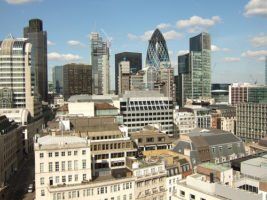

Environment
A Look at how New Commercial Lots are Cutting Down the Environmental Cost
The current United Kingdom population is in excess of 64 million. That’s a lot of people living, breathing and working on a damp little island. BBC estimates the population will increase beyond 70 million by 2027. That increase is roughly the size of the Irish Republic. The good news is that the British Economy is growing steadily with more and more people starting up new businesses. As businesses grow they often need to employ extra staff to cope with the work load, and thus shrinking the unemployment rates over the coming years.
The StartUp Britain campaign was launched in 2011 to encourage enterprise within the UK. Supported by leading industry names including HSBC, Google and Microsoft, StartUp Britain has seen the launch of over 1.5million new businesses with over 300,000 so far in 2016 alone. Without question it is very positive that an increasing number of younger people are contributing to the economy by starting up their own businesses, but it creates a geographical problem which is where these businesses are located. Businesses naturally start off quite small and budding entrepreneurs of the past have famously started in off in their bedroom of their parents house, but as the business gets a reputation and blossoms, it inevitably means seeking a bigger location.
The Greenbelt policy dates back to the early 20th Century and by law and was designed to protect land within the rural countryside from being built on allowing agriculture, forestry and outdoor leisure activities to prevail. Many rural areas are listed within the Ordnance Survey as Areas of Outstanding Natural Beauty which is even more reason to protect them. The policy has been criticised for reducing the amount of land available for building on and as a result pushing up land prices.
In recent years the Government has permitted building on Greenbelt land in order to solve the housing crisis. But local authorities and environmentalists have criticised this stating that Greenbelt land must be protected. Then what are the alternatives?
Currently 11% of London offices still lying empty since the recession, 10m square, the equivalent of ten large city towers are available for businesses to move into. Recycling existing buildings for the benefit of new businesses may be the best solution to the problem. If you’re starting up your own business, or your business is expanding, consider moving into a pre-existing commercial lot. If you look around on the internet you can find plenty of commercial property for sale in the UK at very competitive prices. For example you can find a Barber shop for sale in very affluent areas of the United Kingdom.
Moving into pre-existing commercial lots will also drastically reduce your start-up time. Rather than shelling out money and waiting patiently for your new office to be built, you’d be able to move into a vacant property immediately. You can add your own personal touch like adding fresh paint, new furniture and your own signage to make your new place of business stand out from the crowd, and look as good as new for a fraction of the price.


 Environment10 months ago
Environment10 months agoAre Polymer Banknotes: an Eco-Friendly Trend or a Groundswell?

 Environment12 months ago
Environment12 months agoEco-Friendly Home Improvements: Top 7 Upgrades for 2025

 Features9 months ago
Features9 months agoEco-Friendly Cryptocurrencies: Sustainable Investment Choices

 Features10 months ago
Features10 months agoEco-Friendly Crypto Traders Must Find the Right Exchange





















